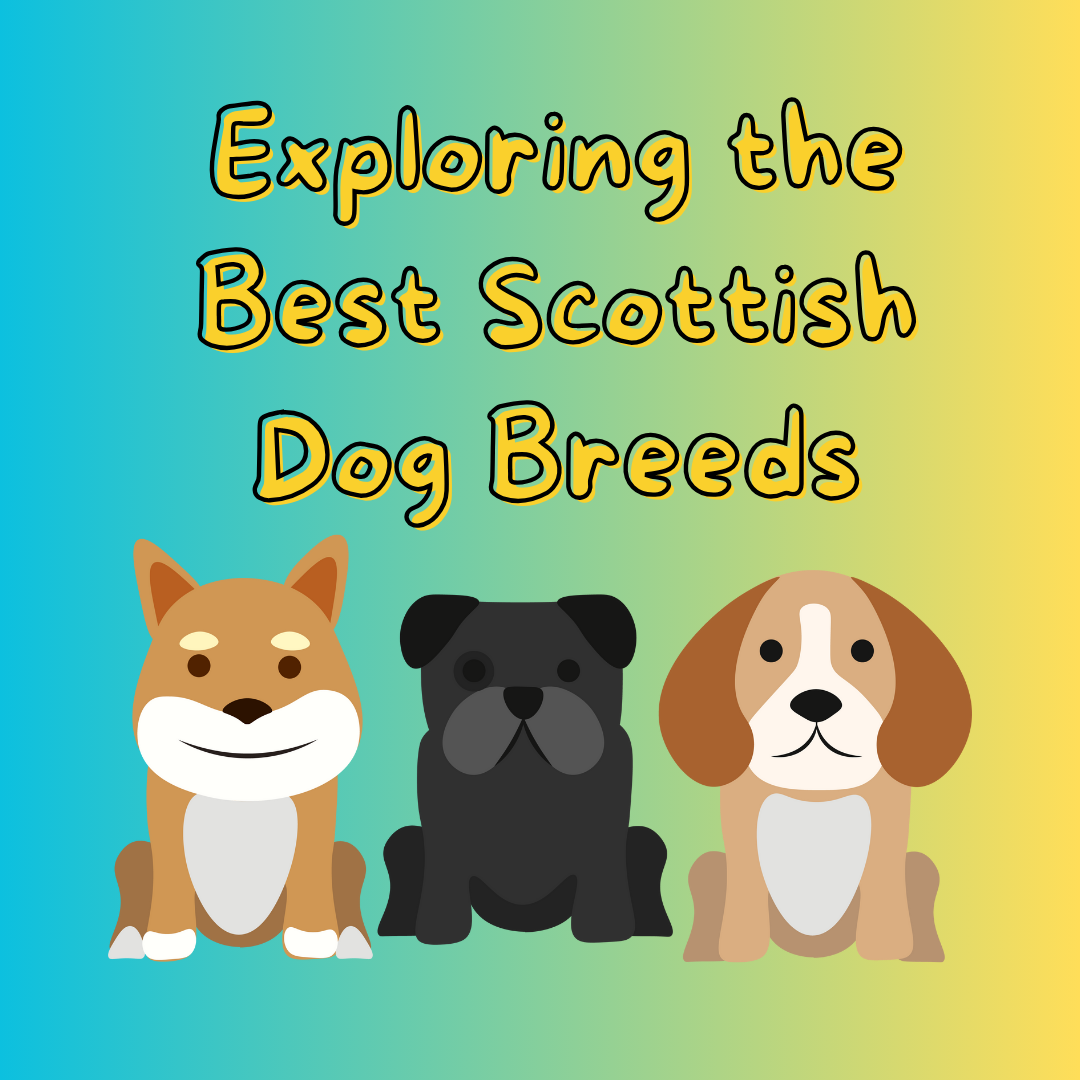Scotland is renowned not only for its breathtaking landscapes and rich history but also for its contribution to the canine world with several outstanding Scottish dogs breeds. These dogs from Scotland are as diverse as they are admirable, ranging from the fiercely intelligent Border Collie to the stoically noble Scottish Deerhound, each breed bearing distinct characteristics that reflect their heritage and unique roles in Scottish rural life. The significance of Scottish dog breeds extends beyond their roles as companions or working dogs; they are integral to Scotland’s cultural legacy and continue to captivate dog lovers worldwide.
In this article, we will explore some of the most beloved Scottish dogs breeds, providing insights into their history, temperament, and practical needs. You’ll discover why the Scottish Terrier holds a special place in the hearts of dog enthusiasts, what makes the Border Collie the epitome of canine intelligence and agility, and how the Golden Retriever transcends its roots to become one of the world’s most popular dogs. Alongside, we’ll look into the charms of the Cairn Terrier, the Bearded Collie’s remarkable herding abilities, the dignified Scottish Deerhound, and the agile Shetland Sheepdog. These sections are designed to give you a comprehensive understanding of Scotland’s contribution to the dog world and help you appreciate the diversity and heritage of Scottish dogs breeds.
Scottish Terrier
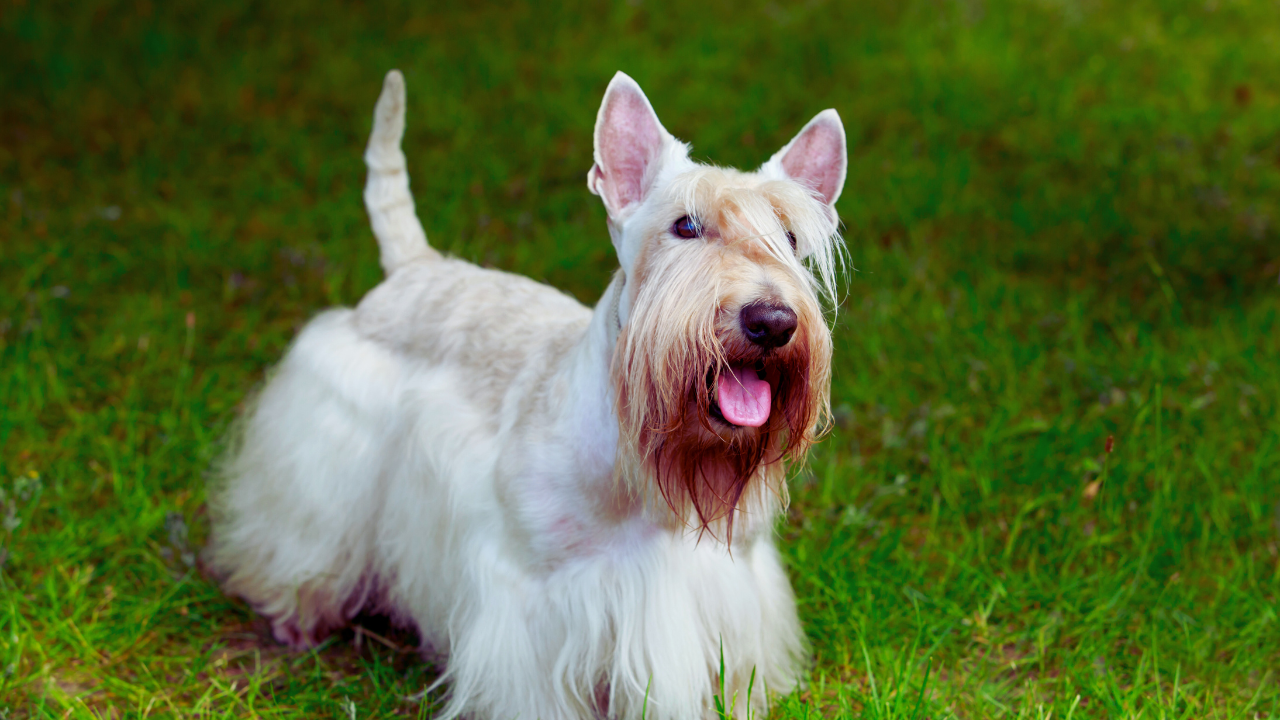
Lifespan
Scottish Terriers, affectionately known as Scotties, typically enjoy a lifespan that varies but can reach up to around 12 years. However, like any breed, their longevity is influenced by their health and lifestyle. It’s essential for potential owners to be aware of the breed’s health challenges and ensure they are proactive in maintaining their Scottie’s health through regular veterinary care and a suitable diet.
Temperament
Scottish Terriers are known for their bold, confident, and independent nature. They possess a dignified, almost-human character, often described as being aloof but deeply loyal to their family. This breed is also known for its terrier persistence, earning them the nickname “the Diehard.” Their alertness and territorial instincts make them excellent watchdogs, although their strong hunting instincts can pose challenges in homes with other small pets.
Physical Characteristics
The distinctive appearance of the Scottish Terrier is marked by their robust and compact build. They stand out with their short-legged but substantial frame, which includes a wiry topcoat and a soft, dense undercoat. Their coat colors can vary, including black, wheaten yellow, or a brindle-stripe pattern. The breed is also recognized for its bright, piercing eyes and erect ears and tail, which convey keen alertness.
History and Origin
Originating from Aberdeen, Scotland, Scottish Terriers were initially bred for hunting foxes, badgers, and other small animals. The breed’s development into what we recognize today as the Scottish Terrier began in the late 1800s, with the first Scottish Terrier Club formed in Scotland in 1882. They were introduced to the United States in 1883 and gained popularity partly due to President Franklin Roosevelt’s Scottie, Fala, becoming an iconic presidential pet.
Additional Information
Grooming and Care: Regular grooming is crucial for maintaining the Scottish Terrier’s coat health. Ideally, their dense coat should be hand-stripped to preserve its texture, although clipping is more common for pets. Regular brushing and periodic baths will keep their coat tangle-free and the skin healthy.
Exercise Needs: Scottish Terriers are energetic and require regular exercise to stay healthy. They enjoy brisk walks and playful activities, which help manage their energy levels and maintain their mental stimulation.
Training Tips: Training a Scottish Terrier can be challenging due to their independent nature. Short, engaging training sessions are recommended, as the breed tends to bore easily with repetitive tasks. They respond well to positive reinforcement techniques, particularly when training is made to seem like their own idea.
Adoption and Breeding: Prospective owners are encouraged to consider adoption from rescue organizations. If
Border Collie
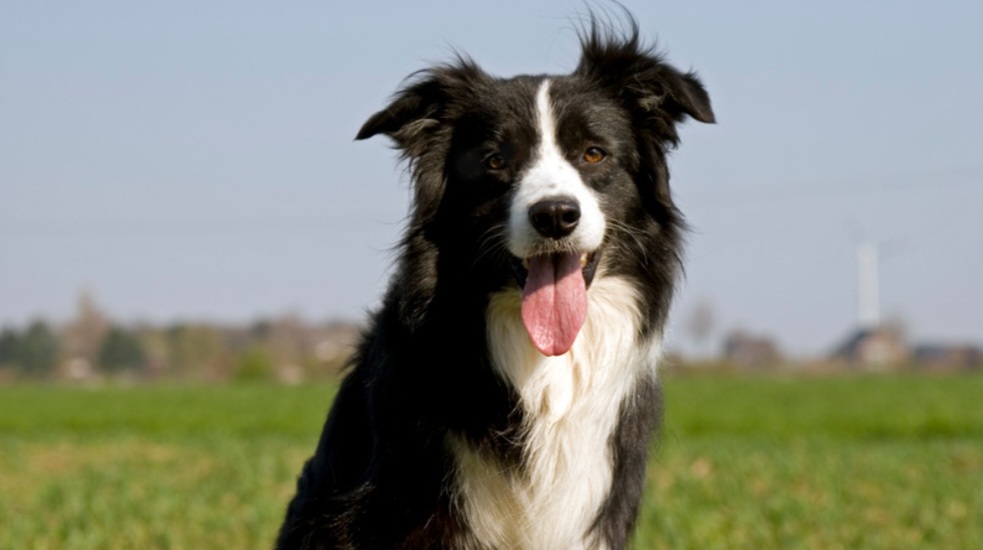
Lifespan
Border Collies typically enjoy a lifespan of around 12 to 15 years, influenced by genetics, lifestyle, and the comprehensive care they receive. A commitment to their health from puppyhood to senior years can greatly impact their longevity. Regular veterinary check-ups and a balanced diet are pivotal in extending their life.
Temperament
Known for their intelligence and energy, Border Collies are workaholics at heart. This breed requires a lot of mental stimulation and physical exercise to prevent problem behaviors. They are highly trainable and excel in obedience, agility, and herding events, making them ideal for active families or individuals who can provide them with the stimulation they need.
Physical Characteristics
Border Collies are medium-sized herders, standing 18 to 22 inches at the shoulder and weighing between 30 to 55 pounds. They possess a double coat that can be either rough or smooth and comes in various colors and patterns. The breed’s agile and balanced physique complements its energetic nature, requiring regular grooming to maintain coat health.
History and Origin
The Border Collie originated in the border country between Scotland and England, developed over centuries for herding sheep. The breed’s abilities were so valued that they were historically exempt from dog taxes. The term “Border Collie” first appeared in 1915 to distinguish these skilled herders from other collie breeds. Their intelligence and work ethic have made them a favorite in both competitive herding and as family pets.
Additional Information
Exercise Needs: Border Collies require vigorous daily exercise. They thrive on having tasks to perform and space to run, making them unsuitable for sedentary lifestyles.
Training and Socialization: Early and ongoing training, coupled with socialization, is essential. These dogs are eager to learn and respond well to positive training methods.
Health Screenings: Responsible breeders will screen for conditions like hip dysplasia and collie eye anomaly. Regular health checks can help manage and prevent potential genetic conditions.
Diet: A high-quality diet appropriate for their life stage is crucial. Monitoring treat intake is important to prevent obesity, especially given their high energy levels.
Grooming: Depending on their coat type, brushing a few times a week to daily during shedding season is necessary to keep their coat free of tangles and debris.
This detailed look into the Border Collie’s characteristics highlights why they are cherished as both working dogs and companions. Their intelligence and versatility make them a standout breed among Scottish dogs breeds.
Check out more exciting articles here.
Golden Retriever
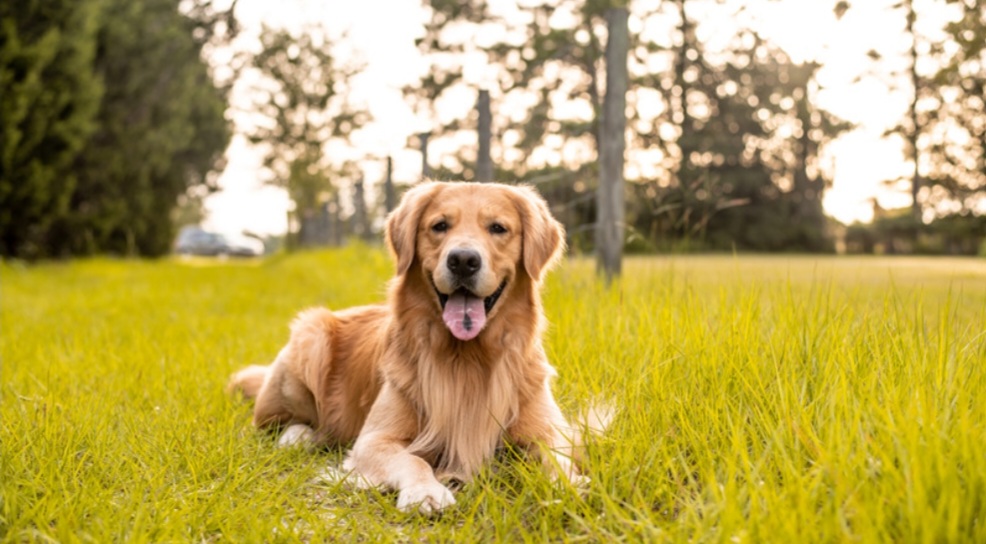
Lifespan
Golden Retrievers typically enjoy a lifespan of 10 to 12 years. This can extend with excellent care, including a balanced diet, regular exercise, and consistent veterinary checkups. Factors such as genetics also play a significant role in the longevity of these beloved Scottish dogs breeds.
Temperament
Golden Retrievers are celebrated for their friendly, intelligent, and devoted nature. They exhibit a gentle and patient demeanor, making them excellent family pets and service dogs. Their adaptability and emotional intelligence allow them to perform well in various roles, including therapy and assistance tasks. The character “Buddy” from the film “Air Bud” showcases the breed’s friendly and capable nature, further cementing the Golden Retriever’s reputation as a versatile and loving Scottish dog breed.
Physical Characteristics
This Scottish dog breed is known for its dense, lustrous coat of gold, which gives the breed its name. Golden Retrievers are medium-sized, sturdy, and muscular dogs. Their broad head, friendly and intelligent eyes, short ears, and straight muzzle are hallmark features. In motion, they move with a smooth, powerful gait, and their feathery tail is carried with a ‘merry action’, a characteristic that adds to their charming appearance.
History and Origin
The Golden Retriever’s origins trace back to the Scottish Highlands in the late 1800s, credited to Dudley Marjoribanks, later known as Lord Tweedmouth. He developed this breed by crossing a wavy-coated retriever with a Tweed Water Spaniel, aiming to create a rugged hunting companion with a soft mouth for retrieving game. The breed was further refined with infusions from other breeds such as the Irish Setter and the Bloodhound. Despite its widespread popularity, a Golden Retriever has never won Best in Show at major dog shows like Westminster or Crufts, a testament to the breed’s humble elegance rather than glamorous appeal. However, their enduring popularity is undiminished, with Golden Retrievers being one of the most beloved Scottish dogs breeds worldwide.
Table 1: Key Features of Golden Retrievers
| Feature | Description |
|---|---|
| Lifespan | 10-12 years, can extend with proper care |
| Temperament | Friendly, intelligent, devoted, excellent family pets, and service dogs |
| Physical Characteristics | Dense, lustrous gold coat; medium size; smooth, powerful gait |
| History and Origin | Developed in the Scottish Highlands in the late 1800s by Dudley Marjoribanks (Lord Tweedmouth) |
Golden Retrievers continue to be a testament to the rich canine heritage of Scotland, embodying the beauty, intelligence, and gentle nature that make Scottish dogs breeds so special. Their history, combined with their endearing qualities, ensures that Golden Retrievers remain a favorite among dog lovers around the globe.
Cairn Terrier
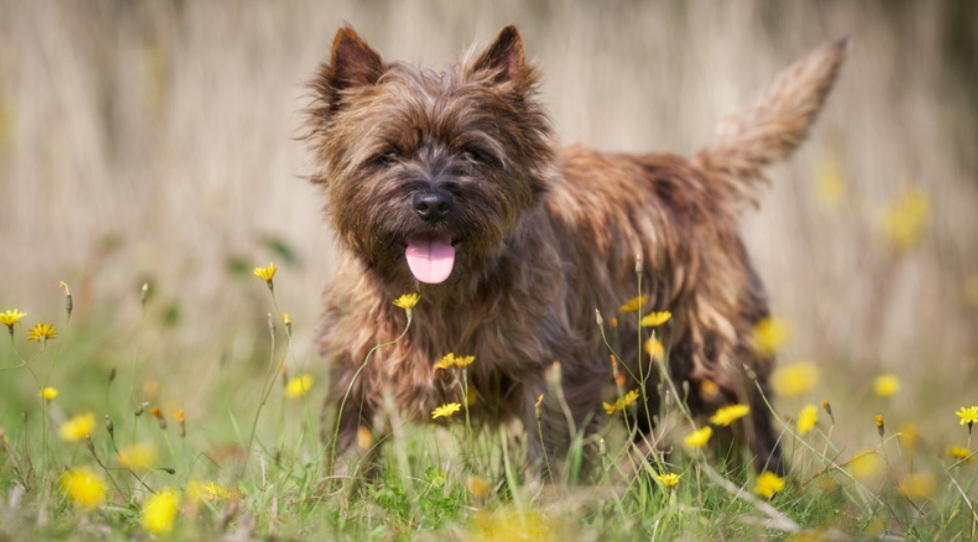
Lifespan
Cairn Terriers typically enjoy a robust lifespan of 13 to 15 years. Their longevity is supported by their general healthiness and the breed’s resilience, which has been honed over centuries in the rugged Scottish terrain. Regular veterinary check-ups and a healthy lifestyle are crucial for maintaining their vitality into their senior years.
Temperament
Known for their spirited and friendly nature, Cairn Terriers are often described as little powerhouses of energy and loyalty. These dogs are incredibly affectionate with their families and thrive on interaction. Their intelligence and alert demeanor make them excellent companions who are always ready for a new adventure or a cozy lap snuggle. The breed’s inherent curiosity and zest for life make them ideal pets for active individuals or families who enjoy engaging and playful activities.
Physical Characteristics
Cairn Terriers are small, sturdy, and built for activity. They typically stand about 10 inches tall and can weigh between 13 and 14 pounds. Their physical build reflects their breed’s working origins, characterized by a short, wide head and a robust body that exudes strength without bulkiness. The breed’s double coat, which is harsh and wiry on top with a soft, downy layer underneath, provides protection from harsh Scottish weather and terrain. This coat comes in various colors, including brindle, black, sand, and red.
History and Origin
The Cairn Terrier’s history is deeply rooted in the Scottish Highlands, where they were originally bred to hunt and chase quarry like foxes and otters from the stone piles known as cairns. Their fearless and hardy nature made them perfect for navigating the challenging landscapes of their homeland. The breed has evolved from a working dog to a beloved companion while retaining the ruggedness of its ancestors. Historical records suggest that Cairn Terriers have been around since the 1500s, although they were only officially recognized as a distinct breed in the early 20th century.
Table 1: Overview of Cairn Terrier Features
| Feature | Description |
|---|---|
| Average Lifespan | 13-15 years |
| Temperament | Energetic, loyal, affectionate |
| Physical Characteristics | Small, sturdy, double-coated |
| Historical Origin | Bred for hunting in the Scottish Highlands |
Cairn Terriers continue to be a popular choice among dog lovers, thanks to their adaptable nature and joyful disposition. Whether in a rural setting or a modern apartment, these dogs bring a touch of the spirited Scottish countryside to their homes.
Bearded Collie
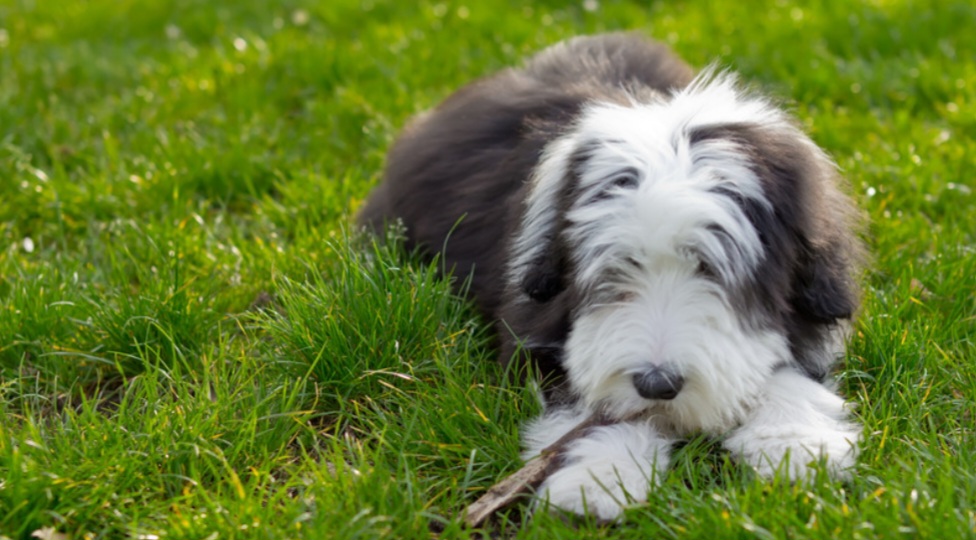
Lifespan
Bearded Collies, known for their robust health, typically enjoy a lifespan of 12 to 14 years. This longevity is supported by their active lifestyle and genetic resilience, but like all breeds, they benefit greatly from regular veterinary care and a well-managed diet to maintain their health and vitality.
Temperament
The Bearded Collie is a breed full of energy and enthusiasm, making them an excellent companion for active families. Their friendly and playful nature is complemented by a streak of independence, which means they thrive on engaging activities that challenge both their mind and body. Early socialization and consistent, positive training sessions are crucial to harness their best qualities and mitigate any stubborn tendencies.
Physical Characteristics
Standing 20 to 22 inches at the shoulder and weighing around 45 to 55 pounds, Bearded Collies are medium-sized dogs characterized by a shaggy double coat and a distinctive “beard” around their face. Their coat, which can appear in colors like black, blue, brown, or fawn, is not just for show; it serves as protection against harsh Scottish weather, making them well-suited for outdoor activities in all climates.
History and Origin
The Bearded Collie, affectionately known as Beardie, has its origins deep in the Scottish Highlands, where they were primarily used as herding dogs. The breed was developed to be hardy and agile to cope with the challenging terrain and to herd sheep and cattle effectively. Despite their historical role as working dogs, Beardies have gained popularity as family pets who bring joy and liveliness to every home they are part of.
Table 1: Key Features of Bearded Collies
| Feature | Description |
|---|---|
| Lifespan | 12-14 years, benefits from regular health check-ups |
| Temperament | Energetic, playful, independent; requires early socialization |
| Physical Characteristics | Medium size, shaggy double coat, distinctive facial “beard” |
| History and Origin | Originated in the Scottish Highlands for herding, now popular as family pets |
Bearded Collies are truly heartwarming examples of Scottish dogs breeds, combining a joyful disposition with a rugged constitution that makes them as suitable for country living as they are for accompanying you on urban adventures. Their history as herding dogs in the challenging environments of Scotland has equipped them with a remarkable adaptability that is cherished by dog lovers around the world.
Scottish Deerhound
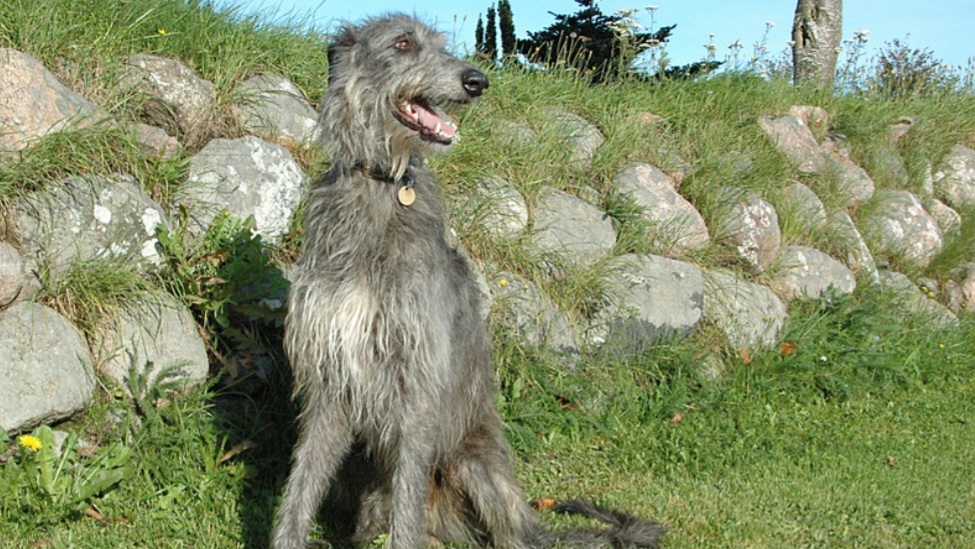
The Scottish Deerhound, a majestic and ancient breed, stands as a testament to Scotland’s rich canine heritage. These Scottish dogs breeds are known for their grace, strength, and gentle demeanor, making them both excellent hunters and beloved companions.
Lifespan
Scottish Deerhounds possess a lifespan ranging from 8 to 11 years. While this may seem shorter compared to some other breeds, many Deerhounds live to old age, enjoying a healthy and active life with proper care and attention.
Temperament
At home, Scottish Deerhounds are the epitome of tranquility and affection. They cherish spending time with their families, often content to simply curl up at your feet. Despite their size, they are well-mannered and typically do not require extensive formal training. Their loving nature and loyalty make them an integral part of any home.
Physical Characteristics
Standing at 28 to 32 inches in height and weighing between 75 to 110 pounds, Scottish Deerhounds are among the largest Scottish dogs breeds. They are sighthounds, built for speed with an aerodynamic body, deep chest, and a narrow waist. This breed’s coat, which can range in several colors including the preferred dark blue-gray, is rough and wiry, requiring regular grooming.
History and Origin
Tracing back to as early as the sixteenth century, Scottish Deerhounds are considered the “royal dog of Scotland.” Initially bred for hunting and taking down large deer, their prowess made them highly valued. The breed faced near extinction in the mid-1700s, but was revived by Archibald and Duncan McNeill around 1825. Today, they remain a cherished symbol of Scotland’s canine legacy.
Table 1: Overview of Scottish Deerhound Features
| Feature | Description |
|---|---|
| Average Lifespan | 8-11 years |
| Temperament | Tranquil, affectionate, loyal |
| Physical Characteristics | Tall, aerodynamic build, wiry coat |
| Historical Origin | Bred for hunting, revered in Scottish history |
Scottish Deerhounds require space to thrive, both for sleeping and exercising. Their laid-back nature belies a need for daily vigorous activity, and their hunting instincts necessitate caution during outdoor adventures. They thrive in cooler climates and prefer lying on hard, cool surfaces, which can lead to calluses. Despite these needs, the Scottish Deerhound’s affectionate temperament and noble history make it a unique and rewarding companion among Scottish dogs breeds.
Shetland Sheepdog
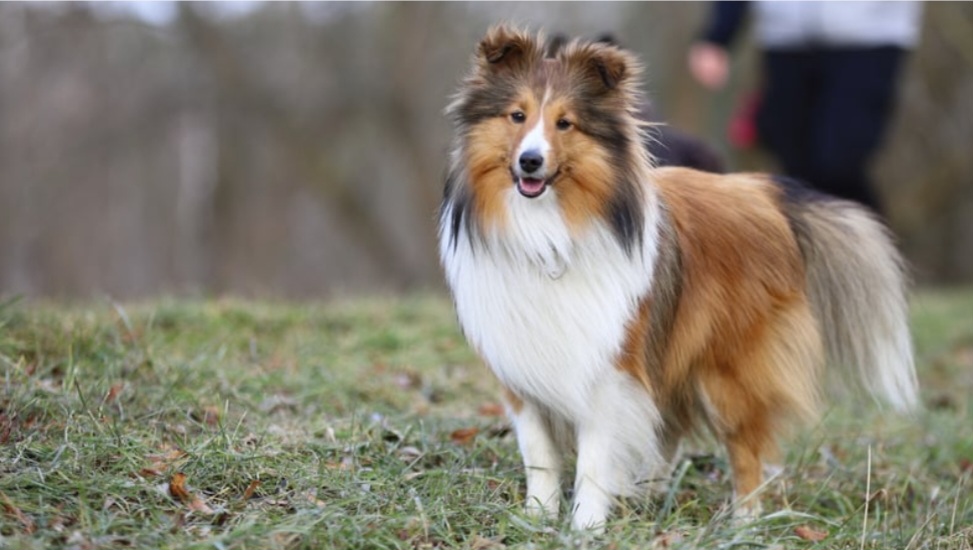
Lifespan
The Shetland Sheepdog, commonly referred to as the Sheltie, typically enjoys a lifespan of 12 to 14 years. This longevity is attributed to their robust health and the breed’s adaptation to the harsh environments of the Shetland Islands. Regular veterinary care and a healthy lifestyle are essential to maintain their vitality.
Temperament
Shelties are known for their bright, eager-to-please nature, making them highly trainable and excellent at obedience and agility sports. They possess a gentle and affectionate temperament, making them ideal family pets. However, they are also alert and vocal, known to bark at unfamiliar sounds or in excitement, making them effective watchdogs. Their intelligence requires both physical and mental stimulation to prevent boredom and promote good behavior.
Physical Characteristics
Standing 13 to 16 inches at the shoulder and weighing between 15 to 25 pounds, Shelties are small but agile herders. They feature a double coat with a long, straight outer coat and a dense undercoat, ideal for the cold climate of their native land. Typical coat colors include sable, black, and blue merle, often with white and tan markings. Their expressive faces are adorned with a wedge-shaped head, almond-shaped eyes, and small, three-quarter erect ears.
History and Origin
Originating from the Shetland Islands, the Sheltie’s early ancestors were Scandinavian herding dogs, which were later crossbred with breeds like the King Charles Spaniel and the Rough Collie. The breed was developed to herd sheep and guard homes, adapting over time to the islands’ limited resources and harsh conditions. Officially recognized in the early 20th century, the Sheltie has since become a cherished companion worldwide, retaining its herding instincts and versatility.
Table 1: Overview of Shetland Sheepdog Features
| Feature | Description |
|---|---|
| Average Lifespan | 12-14 years |
| Temperament | Intelligent, trainable, vocal, affectionate |
| Physical Characteristics | Small size, double coat, various colors |
| Historical Origin | Bred in Shetland Islands, herding background |
Shelties are cherished for their loyalty, intelligence, and adaptability, embodying the spirit of their rugged Scottish origins. Whether in a rural setting or a modern home, they bring joy and energy, proving that great things often come in small packages.
Conclusion
The exploration of Scottish dogs breeds has taken us from the rugged terrains of the Scottish Highlands to the cozy living rooms of dog lovers around the globe, highlighting the profound impact these breeds have had on canine enthusiasts and their significant roles within Scotland’s cultural fabric. The discussed breeds, each with their distinct characteristics and historical significance, represent more than just companionship; they serve as living links to Scotland’s pastoral history and its deep-rooted heritage. Scottish dog breeds, from the diligent Border Collie to the noble Scottish Deerhound, embody the spirit of Scotland’s diverse landscapes and the resilience required to thrive within them. Their stories of companionship, loyalty, and versatility continue to inspire and resonate with dog owners worldwide.
As we conclude, it is clear that Scottish dogs breeds hold a special place in the world of canines, offering a rich tapestry of history, personality, and functionality that appeals to a wide range of dog enthusiasts. The journey through the characteristics, origins, and unique traits of these breeds not only enriches our understanding but also deepens our appreciation for these remarkable animals. Whether you are captivated by the intelligence of the Border Collie, the affectionate nature of the Golden Retriever, or the dignified presence of the Scottish Deerhound, each breed contributes distinctly to the legacy of Scottish dog breeds. Their continuing popularity and the affection they garner from their human companions underscore the timeless appeal and enduring charm of these Scottish treasures.
FAQs
What is the most beloved dog breed originating from Scotland?
The Rough Collie, famously known as ‘Lassie’ from the iconic movie, leads the pack as the most cherished Scottish dog breed. Following closely are the Golden Retriever, Border Terrier, Skye Terrier, and West Highland Terrier, all of which hold a special place in the hearts of dog enthusiasts around the world.
Which breed holds the title of Scotland’s national dog?
The question of Scotland’s national dog is intriguing, yet the answer remains unspecified in the provided information.
Can you name a dog breed with roots in Scotland?
While the specific answer to this question wasn’t provided, it’s known that several dog breeds, including the Rough Collie, Golden Retriever, Border Terrier, Skye Terrier, and West Highland Terrier, boast Scottish ancestry.
What is the name of the long-haired herding breed from Scotland?
The Rough Collie, also referred to as the Long-Haired Collie, is the distinguished long-coated dog breed from Scotland. Originally bred for herding sheep, its elegant appearance and amiable nature have made it a popular choice for both show dogs and companions.

